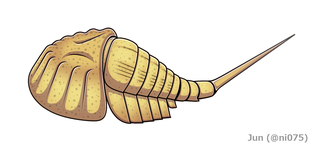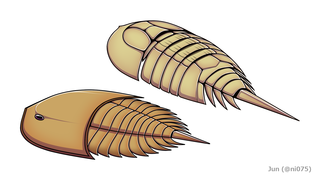
The Kyoto Protocol was an international treaty which extended the 1992 United Nations Framework Convention on Climate Change (UNFCCC) that commits state parties to reduce greenhouse gas emissions, based on the scientific consensus that (part one) global warming is occurring and (part two) that human-made CO2 emissions are driving it. The Kyoto Protocol was adopted in Kyoto, Japan, on 11 December 1997 and entered into force on 16 February 2005. There were 192 parties (Canada withdrew from the protocol, effective December 2012) to the Protocol in 2020.

Reaganomics, or Reaganism, were the neoliberal economic policies promoted by U.S. President Ronald Reagan during the 1980s. These policies are characterized as supply-side economics, trickle-down economics, or "voodoo economics" by opponents, while Reagan and his advocates preferred to call it free-market economics.

In an internal combustion engine, a turbocharger is a forced induction device that is powered by the flow of exhaust gases. It uses this energy to compress the intake gas, forcing more air into the engine in order to produce more power for a given displacement.

The World Health Organization (WHO) is a specialized agency of the United Nations responsible for international public health. Headquartered in Geneva, Switzerland, it has six regional offices and 150 field offices worldwide.

Redox is a type of chemical reaction in which the oxidation states of substrate change. Oxidation is the loss of electrons or an increase in the oxidation state, while reduction is the gain of electrons or a decrease in the oxidation state.

Physical fitness is a state of health and well-being and, more specifically, the ability to perform aspects of sports, occupations and daily activities. Physical fitness is generally achieved through proper nutrition, moderate-vigorous physical exercise, and sufficient rest along with a formal recovery plan.

A park and ride, also known as incentive parking or a commuter lot, is a parking lot with public transport connections that allows commuters and other people heading to city centres to leave their vehicles and transfer to a bus, rail system, or carpool for the remainder of the journey. The vehicle is left in the parking lot during the day and retrieved when the owner returns. Park and rides are generally located in the suburbs of metropolitan areas or on the outer edges of large cities. A park and ride that only offers parking for meeting a carpool and not connections to public transport may also be called a park and pool.

Dover Motor Speedway is a race track in Dover, Delaware. The track has hosted at least one NASCAR Cup Series race each year since 1969, including two per year from 1971 to 2020. In addition to NASCAR, the track also hosted USAC and the Indy Racing League. The track features one layout, a 1 mile (1.6 km) concrete oval, with 24° banking in the turns and 9° banking on the straights. The speedway is owned and operated by Speedway Motorsports.

Austerity is a set of political-economic policies that aim to reduce government budget deficits through spending cuts, tax increases, or a combination of both. There are three primary types of austerity measures: higher taxes to fund spending, raising taxes while cutting spending, and lower taxes and lower government spending. Austerity measures are often used by governments that find it difficult to borrow or meet their existing obligations to pay back loans. The measures are meant to reduce the budget deficit by bringing government revenues closer to expenditures. Proponents of these measures state that this reduces the amount of borrowing required and may also demonstrate a government's fiscal discipline to creditors and credit rating agencies and make borrowing easier and cheaper as a result.

An aircraft fairing is a structure whose primary function is to produce a smooth outline and reduce drag.
MapReduce is a programming model and an associated implementation for processing and generating big data sets with a parallel, distributed algorithm on a cluster.
Apache Hadoop is a collection of open-source software utilities that facilitates using a network of many computers to solve problems involving massive amounts of data and computation. It provides a software framework for distributed storage and processing of big data using the MapReduce programming model. Hadoop was originally designed for computer clusters built from commodity hardware, which is still the common use. It has since also found use on clusters of higher-end hardware. All the modules in Hadoop are designed with a fundamental assumption that hardware failures are common occurrences and should be automatically handled by the framework.

Bembicosoma is a genus of synziphosurine, a paraphyletic group of fossil chelicerate arthropods. Bembicosoma was regarded as part of the clade Planaterga. Fossils of the single and type species, B. pomphicus, have been discovered in deposits of the Silurian period in the Pentland Hills, Scotland. Bembicosoma had been tentatively assigned as an eurypterid before its synziphosurine affinities revealed.
Bunaia is a genus of synziphosurine, a paraphyletic group of fossil chelicerate arthropods. Bunaia was tentatively placed as part of the clade Planaterga. The genus contains at least one species: Bunaia woodwardi from the Silurian period in Svalbard, Norway. Only a few morphological information of B. woodwardi had been confirmed, as the species known only from poorly preserved specimens compose of semicircular carapace, fragments of opisthosoma and disarticulated telson. The placement of "Bunaia" heintzi within this genus had been questioned and required further investigation.

Bunodes is a genus of synziphosurine, a paraphyletic group of fossil chelicerate arthropods. Bunodes was regarded as part of the clade Planaterga. Fossils of the single and type species, B. lunula, have been discovered in deposits of the Silurian period in Ludlow, England. Bunodes is the type genus of the family Bunodidae, the other genera of the same family being Limuloides.

Cyamocephalus is a genus of synziphosurine, a paraphyletic group of fossil chelicerate arthropods. Cyamocephalus was regarded as part of the clade Planaterga. Fossils of the single and type species, C. loganensis, have been discovered in deposits of the Silurian period in Lesmahagow, Scotland. Cyamocephalus is one of the two members of the family Pseudoniscidae, the other being Pseudoniscus. Cyamocephalus differ from Pseudoniscus by the fused tergites of 6th and 7th opisthosomal segments.

Pasternakevia is a genus of synziphosurine, a paraphyletic group of fossil chelicerate arthropods. Pasternakevia was regarded as part of the clade Planaterga. Fossils of the single and type species, P. podolica, have been discovered in deposits of the Silurian period in Podolia, Ukraine.

Pseudoniscidae is an extinct family of synziphosurine chelicerates that lived in the Silurian. Pseudoniscidae is classified inside the clade Planaterga, alongside Bunodidae and Dekatriata. Pseudoniscidae is composed by two genera, Cyamocephalus and Pseudoniscus.

Prosomapoda is a clade of euchelicerates including the groups Xiphosura and Planaterga, as well as several basal synziphosurid genera. The clade is defined by the lack of exopods of prosomal appendage II-V in the adult instar, where in contrast the exopods of appendage II-V are well-developed in the non-prosomapod euchelicerates Offacolus and Dibasterium.

Bunodidae is an extinct family of synziphosurine chelicerates that lived in the Silurian. Bunodidae is classified inside the clade Planaterga alongside Pseudoniscidae and Dekatriata. Bunodidae is composed by two genera, Bunodes and Limuloides.

















